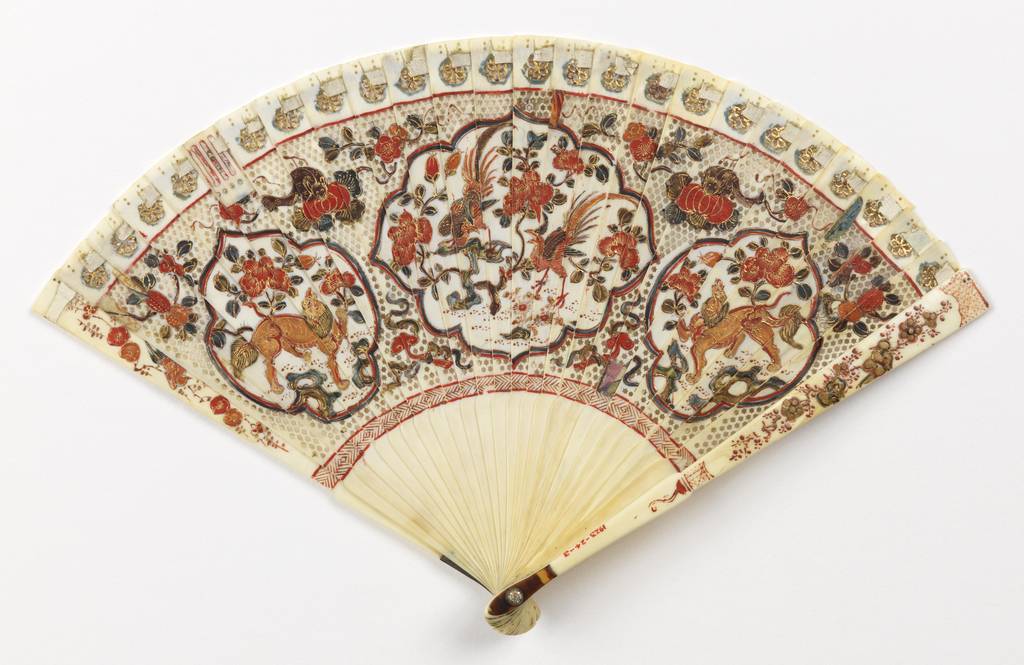This rare, early 18th-century Chinese fan for the Dutch market is a wonderful example of the many interconnections through time that can be extracted from an object around its design, technical details, and state of preservation. The fan itself is emblematic of the history of fan design, which originated in the Orient and arrived in Europe, along with other luxury goods, beginning in the 16th century. The decorative motifs on the fan may seem familiar to connoisseurs of early 18th-century porcelain. In fact, this Chinese fan was painted on ivory in the Imari porcelain style, specifically for export to the Dutch market where Imari porcelain enjoyed great popularity in the early 18th century. The distinctive characteristic of Chinese Imari porcelain is the use of a blue underglaze with red and gold highlights, the same decorative color scheme seen on this fan. Chinese Imari ware copied the design of Japanese Imari ware and was produced in quantity during the first quarter of the 18th century. Beautiful examples of Chinese Imari ware porcelain for the Dutch market exist in many museum collections, including the Victoria and Albert Museum in London (a museum that inspired the original concept for Cooper-Hewitt in the early 19th century). This fan is identified as “brisé,” a French term that literally means “broken.” Brisé refers to the fact that the sticks do not extend and attach to a pleated fan leaf to stabilize the structure of the fan, but rather are held in place by a line of string or ribbon threaded through the sticks. The Cooper-Hewitt fan is held together at the edge by narrow leather ribbon threaded through small slits, which appears to be a later repair of the fan after the fragile original string connection broke. Several other early repairs are evident on the fan and have been retained as part of its history through time. An example of a similar fan with its original connecting string threaded through a double row of small holes can be seen in the collection of the Victoria and Albert Museum. The fan was further treated by Cooper-Hewitt conservators in 1986, using an ingenious, non-invasive and easily reversible method for repairing fragile ivory objects, originally developed by conservator Terry Drayman Weisser at the Walters Art Museum in the 1970s. In order to stabilize one of the broken ivory sticks of the fan, a “Band-Aid” of Parafilm M was laminated to archival translucent mending tissue and adhered to the ivory stick with a small amount of heat that caused the Parafilm to soften and become tacky, like wax.

The broken ivory stick before treatment.


Normally, Parafilm (a thermoplastic film made of butadiene polyethylene and paraffin wax) is used as a flexible film to cover open beakers in chemical laboratories. The use of this pliable 20th-century plastic in the preservation of a fragile 18th-century ivory fan creates a new connection between previously unrelated materials, and adds yet another dimension to this object’s rich history.
